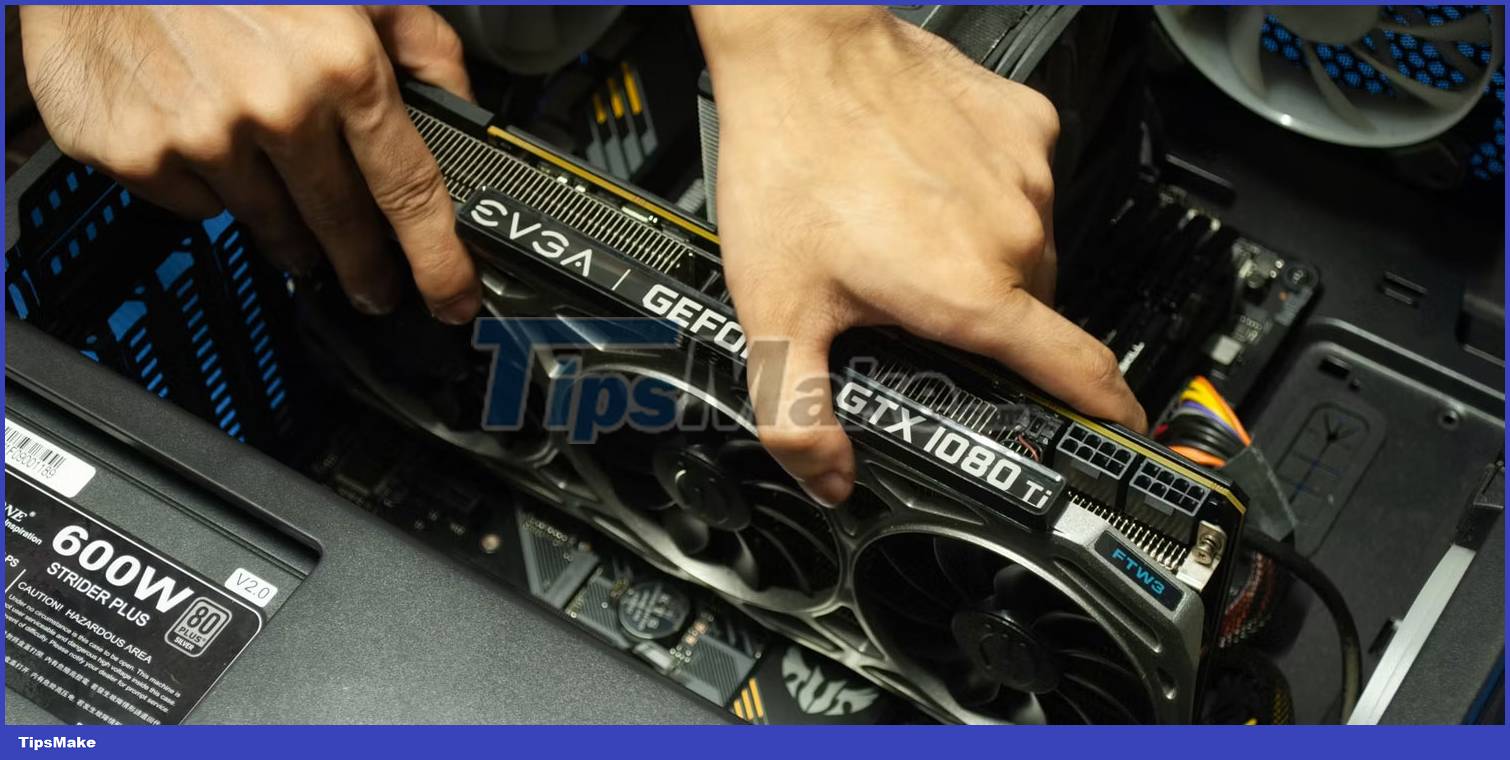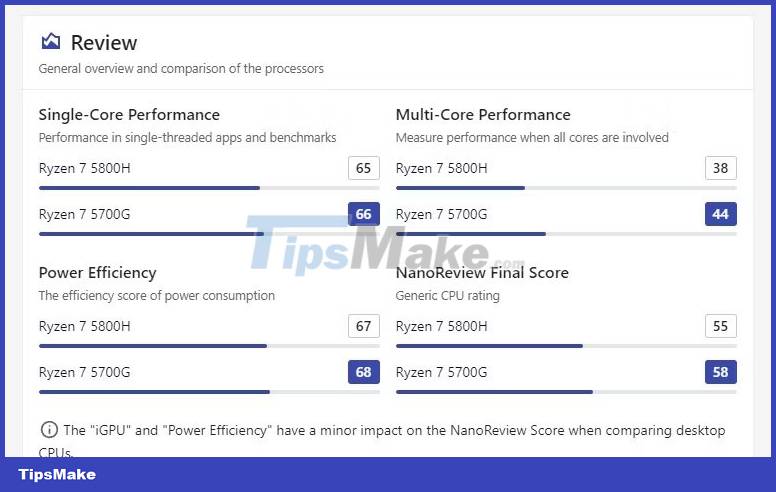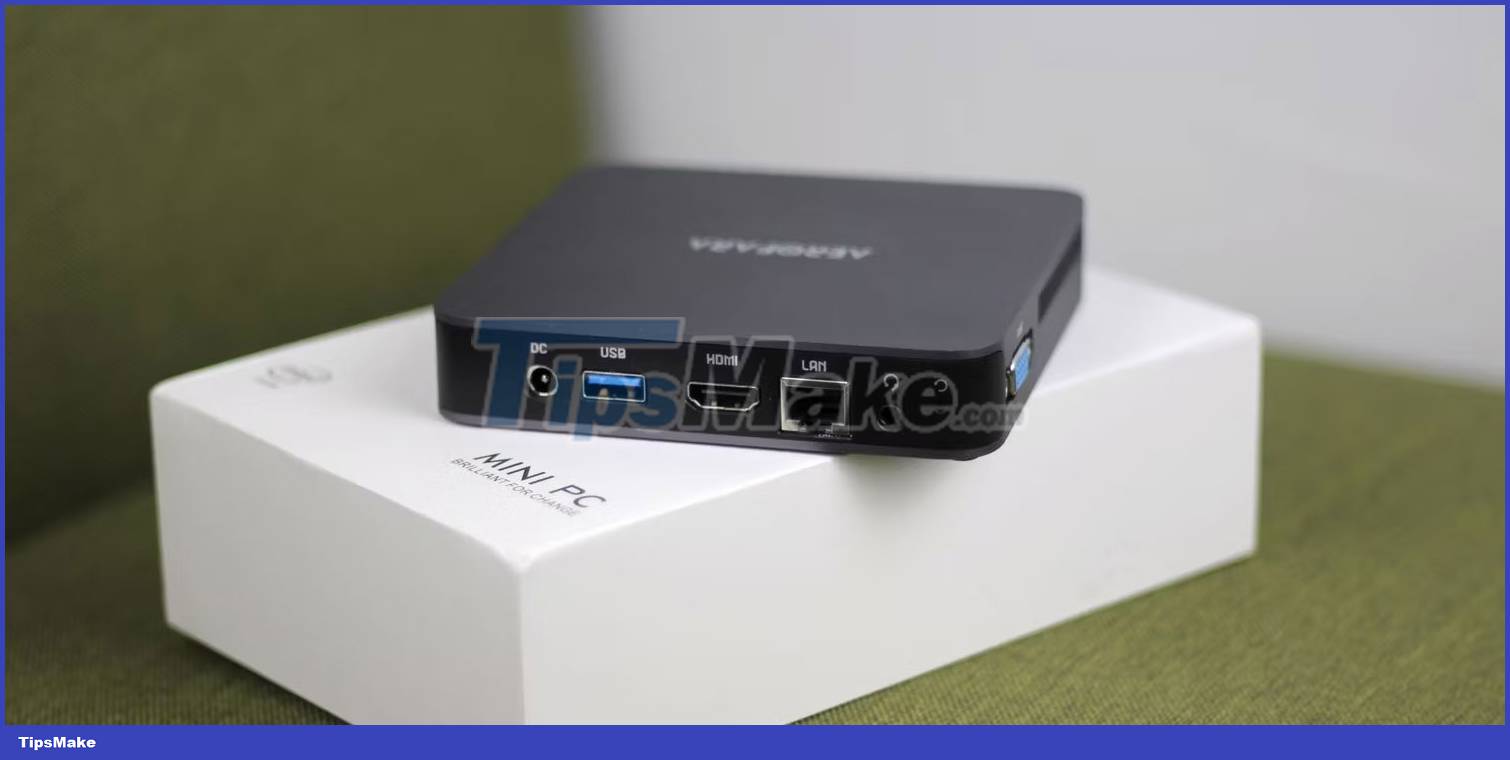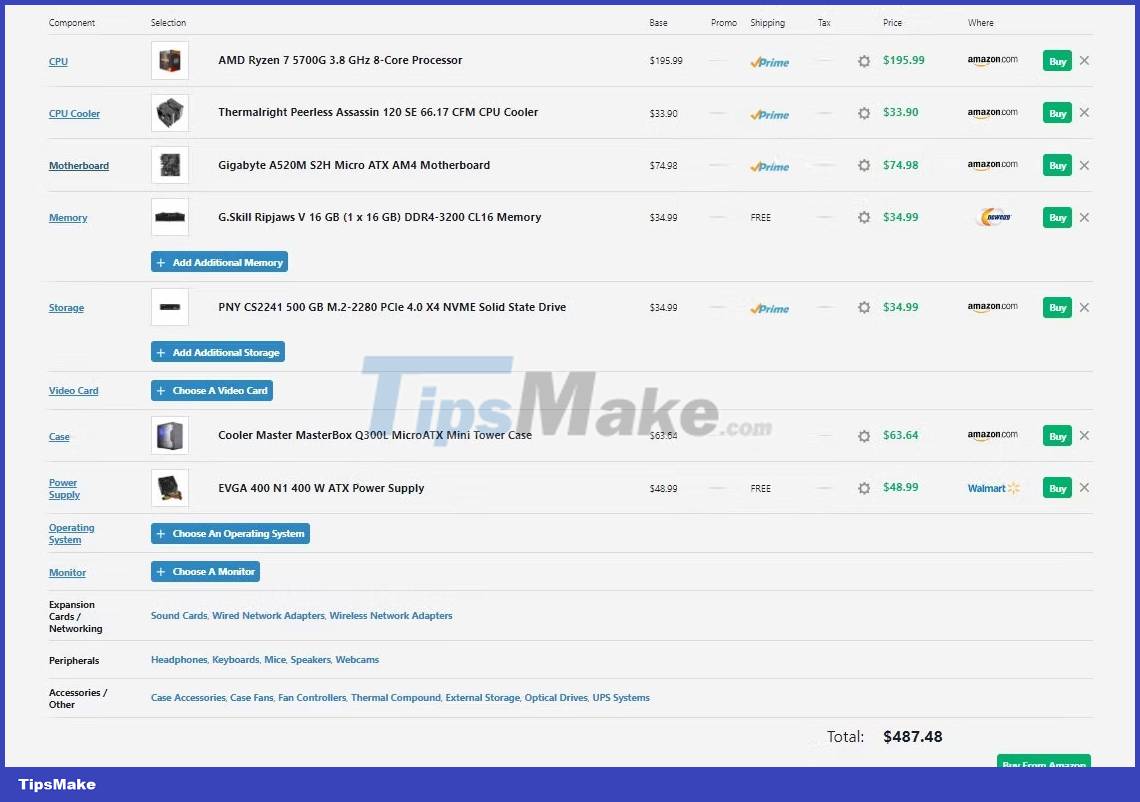What is the difference between Mini PC and Desktop PC? Which one should I choose?
Mini PCs have proven to be powerful enough for performance and gaming as hardware components get more powerful with each generation. As more games are optimized and hardware output becomes more efficient, the Mini PC could be your best PC hardware purchase in 2024.
Compare performance

Desktop PCs will always be significantly more powerful than Mini PCs because they have full-sized graphics cards and better cooling. However, you should not underestimate the performance of AMD APUs.
APUs have integrated graphics and AMD has put a lot of effort into developing them for mobile devices such as laptops, handheld gaming PCs and of course Mini PCs. This makes these APUs designed to handle larger loads than what we would expect.
Including these chips in Mini PCs that have better cooling capabilities than laptops and handhelds allows manufacturers to squeeze more performance out of them, making performance quite competitive compared to mainframe computers have the same specifications.

For example, compare the $499 Beelink SER5 MAX Ryzen 7 5800H APU with a comparable desktop with a Ryzen 7 5700G APU. Nanoreview's benchmarks show that they are quite close in performance, with similar single and multi-core performance. Pre-built PCs on Amazon and Newegg cost over $600, even up to the $800 mark. With equivalent performance, it is hard to deny that Mini PC dominates the low to medium performance segment.
Productivity and ease of use

Mini PC has the same functionality as Desktop PC. However, the Mini PC takes the cake thanks to its easy accessibility. You don't have to lug around behind a heavy PC with multiple cables plugged in anymore, and you have access to all you need right on the tiny PC on your desk.
Mini PCs are not even limited in IO and interfaces compared to full-sized motherboards. MINISFORUM UM780 For a $650 desktop build with an AMDRyzen 7 7000 and 32GB of DDR5 RAM, you'll have to go with the A620 motherboard. AMD A series motherboards have the lowest specifications and typically do not have DisplayPort.
If the UM780 XTX's ports aren't enough, you can plug in a high-speed USB-C hub. USB hubs are often difficult to use on desktops because they have very short cables, but with a Mini PC sitting right on the desk, short cables can really add extra IO without increasing cable clutter. .
If you need to get work done quickly by taking the system with you, you can easily plug the Mini PC into your office setup and start working. You can also easily take it home and plug it into your home setup, do some work or play games by plugging it into your TV.
How does the upgradeability of Mini PC compare to desktop PC?
Upgradability is the Mini PC's weakest point. Desktop PCs have almost limitless upgradeability, where you can easily replace every major component. You won't be able to upgrade the Mini PC's CPU/APU, but in many cases you can upgrade the RAM and storage capacity with an SSD.
While you can't upgrade the APU, many Mini PC users have experimented with adding a powerful external GPU with varying degrees of success. This opens up even more potential because your Mini PC can function as a "work" PC as well as a powerful gaming rig if you plug in an external GPU at home.
External GPU cases are expensive, but they can be worth it if you want a PC that does everything for you.
How much does a Mini PC cost compared to a desktop?

Surprisingly, Mini PCs don't have as much of a "mobile tax" as laptops, making their price-to-performance ratio quite close to desktops in many cases.
It's true that you're missing key features like touchpad, screen, and keyboard if you compare a Mini PC to a laptop, but here, we're comparing a Mini PC to a desktop.

The author of the article chose the $359 Beelink SER5 Mini PC with Ryzen 7 5700U with 16 GB of DDR4 RAM and a 500 GB SSD and compared it with similar parts that can be found on PC Part Picker. Mini PC costs around 128 USD and desktop costs 487 USD (at time of writing - hardware prices fluctuate).
This is because the Mini PC has a much simpler case; it already has a motherboard, doesn't need an extra fan, and doesn't need a large power source. The reduced cost comes with some trade-offs, such as the aforementioned limited upgradeability and power-limited mobile-grade APUs instead of desktop-grade APUs.
Should I buy a Mini PC or a desktop?
If top performance or upgradeability isn't your biggest concern, a Mini PC is one of the easiest ways to buy a PC and get it working right away. Mini PCs are smaller in size than laptops, making them easy to carry in your pocket - so don't overlook Mini PCs during your next hardware upgrade.
You should read it
- Difference between desktop GPU and laptop GPU
- Difference between HDMI, Mini HDMI and Micro HDMI
- The difference between Remote Desktop (RDP) and VPN
- The 7 best mini PCs for every budget
- What is the difference between GTK + and Qt?
- Difference between GDDR RAM and RAM
- Laptops assembled in Vietnam will only cost 30% more than PCs
- How to Open a Mac Mini
May be interested
- Choose to buy a mini fridge by size
 refer to the size of today's most popular mini fridge products from midea, electrolux, funiki, aqua brands to choose the right product.
refer to the size of today's most popular mini fridge products from midea, electrolux, funiki, aqua brands to choose the right product. - 4 basic difference between Windows Server and Windows Desktop
 windows server is the operating system for servers, servers, so it will have differences compared to the windows desktop version we still see everyday. keep these in mind when you need to choose to install windows server or windows desktop. they are also important when you need to restore, repair installation.
windows server is the operating system for servers, servers, so it will have differences compared to the windows desktop version we still see everyday. keep these in mind when you need to choose to install windows server or windows desktop. they are also important when you need to restore, repair installation. - Top 10 best mini laptops 2018
 looking for a mini laptop? you came to the right place. due to the number of mini laptops in the market today, choosing a good laptop is not an easy task. therefore, this article will introduce a list of the best mini laptops 2018 for you to choose from.
looking for a mini laptop? you came to the right place. due to the number of mini laptops in the market today, choosing a good laptop is not an easy task. therefore, this article will introduce a list of the best mini laptops 2018 for you to choose from. - Does Desktop or Laptop Really Save You Money Over Time?
 you intend to buy a computer but do not know whether to choose a laptop or a desktop. let's look at the pros and cons of these two types of computers and choose a suitable computer for yourself.
you intend to buy a computer but do not know whether to choose a laptop or a desktop. let's look at the pros and cons of these two types of computers and choose a suitable computer for yourself. - Instructions to buy a desktop computer: Choose the right computer for you
 in this tutorial, we will series out the types of desktops available on the market, from which you can choose which computers are suitable.
in this tutorial, we will series out the types of desktops available on the market, from which you can choose which computers are suitable. - How to Set Your Desktop Color on a Mac
 choosing a desktop color on your computer allows you to personalize your mac, and change the background to suit your mood. in addition to plain color backgrounds, you can also choose from a wide range of high quality graphics and photos...
choosing a desktop color on your computer allows you to personalize your mac, and change the background to suit your mood. in addition to plain color backgrounds, you can also choose from a wide range of high quality graphics and photos... - Why upgrade from Mac mini M1 to Mac mini M4?
 four years later, the m1 mac mini is finally showing its age, and the m4 mac mini's incredible performance makes it a compelling upgrade.
four years later, the m1 mac mini is finally showing its age, and the m4 mac mini's incredible performance makes it a compelling upgrade. - 9 most mini-computers worth buying today
 compact mini computer, space-saving, easy to move to help users feel more convenient. however, on the market today there are also a number of mini computers from different manufacturers and spread across all segments.
compact mini computer, space-saving, easy to move to help users feel more convenient. however, on the market today there are also a number of mini computers from different manufacturers and spread across all segments. - What is the difference between GTK + and Qt?
 gtk + and qt are toolkits that developers use to structure how the application will look. these toolkits provide buttons, toolbars, sliders and user menus to see when using an application.
gtk + and qt are toolkits that developers use to structure how the application will look. these toolkits provide buttons, toolbars, sliders and user menus to see when using an application. - Compare the difference between Ram Laptop and Ram Desktop
 here are some ways to compare ram laptop with ram desktop, along with how to choose the best ram for your computer
here are some ways to compare ram laptop with ram desktop, along with how to choose the best ram for your computer










 Should I upgrade to an AMD Socket AM5 motherboard?
Should I upgrade to an AMD Socket AM5 motherboard? Microsoft lists supported CPUs from the Meteor Lake 'Core Ultra' series and next-generation Raptor Lake
Microsoft lists supported CPUs from the Meteor Lake 'Core Ultra' series and next-generation Raptor Lake Top cheap gaming CPUs worth buying in 2023
Top cheap gaming CPUs worth buying in 2023 How to Increase RAM on Your Computer
How to Increase RAM on Your Computer How to Remove Air Bubbles Under Screen Protector
How to Remove Air Bubbles Under Screen Protector How to Check Computer Configuration
How to Check Computer Configuration